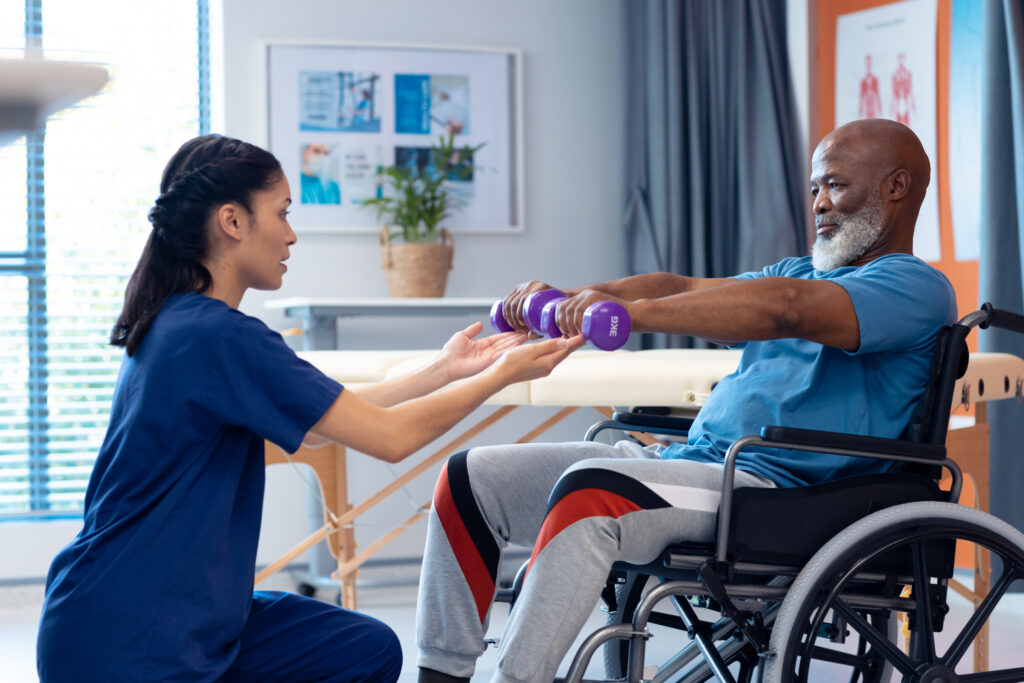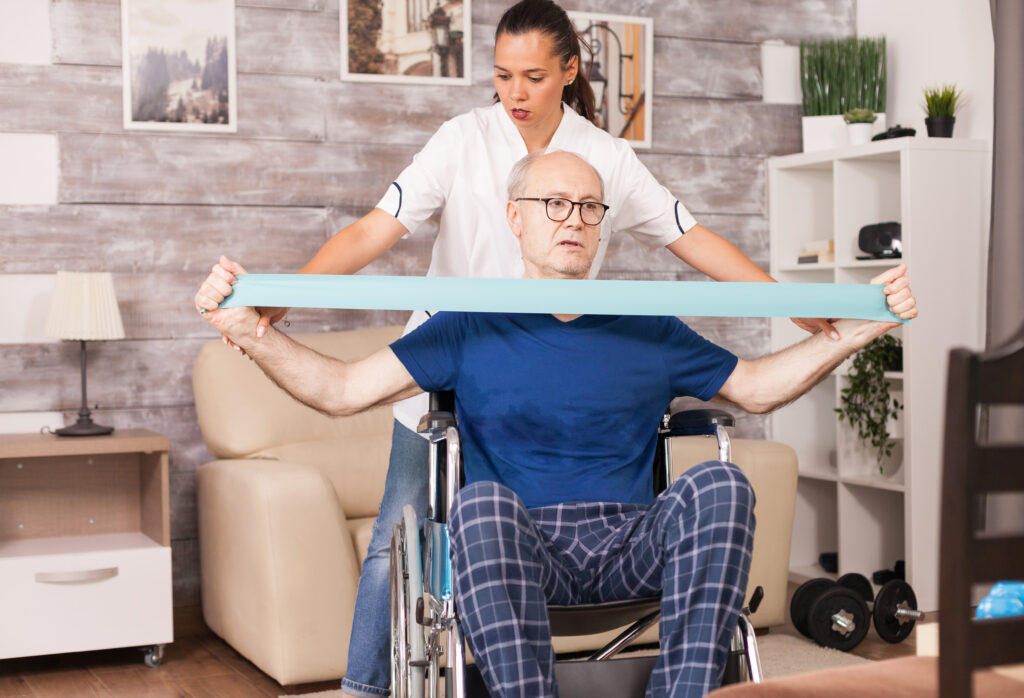
Source: Motion Array
Daily movement is essential for wheelchair users to maintain health, independence, and emotional well-being. Long-term use of a wheelchair can lead to challenges such as muscle atrophy, joint stiffness, pressure sores, and poor circulation. But you don’t need to visit the gym to experience the benefits of feeling stronger and more mobile. Simple, targeted movements and stretches can make a big difference in everyday life.
At Karma Thailand, we believe everyone deserves to feel strong, balanced, and empowered—starting with movements that work for them. Whether you’re looking to build strength, ease stiffness, or simply feel more energized, these exercises for wheelchair users offer a pathway to a better, healthier life.
Wheelchair-Friendly Exercises: Pressure Relief, Stretching, and Strength Training
Pressure Relief Exercises: Relieve Pressure and Stimulate Circulation
Pressure relief is essential for wheelchair users to prevent sores and promote healthy blood flow. Try incorporating the following into your daily routine:
- Push-Up Exercises: Using your armrests, push your body upward slightly off the seat and hold for a few seconds. Repeat several times. This relieves pressure from your sitting bones and improves circulation.
- Weight Shifting: Lean gently to the left, right, or forward in your seat to shift your body weight. Hold each position for 15–30 seconds to redistribute pressure.
- Gentle Tapping or Patting: Lightly tap or pat the thighs and calves to stimulate circulation in the lower limbs. This simple technique can be especially helpful for those with limited leg movement.
Stretching and Strength Training: Maintaining Flexibility, Muscle Strength, and Joint Mobility

Source: Motion Array
Upper Body Exercises
Maintaining flexibility in the upper body helps improve mobility for everyday tasks like transferring, eating, or dressing.
- Arm Stretches and Rotations: Extend your arms forward, sideways, and overhead. Make slow circular motions to increase flexibility and range of motion.
- Shoulder Stretches and Strength Training: Cross one arm over your chest and gently pull it with the opposite arm. Use light resistance bands or small weights to build shoulder strength.
- Wrist Mobility Exercises: Flex and extend your wrists or rotate them in circles to keep joints limber and reduce tension from repetitive motion.
Core Strength Training
A strong core supports posture and balance, both crucial for wheelchair users.
- Abdominal Breathing Exercises: Practice deep breathing by expanding the belly on each inhale. This activates the diaphragm and strengthens the abdominal muscles.
- Core Stability Exercises: Sit upright and try engaging your core muscles while lifting one foot slightly off the footrest. Hold for a few seconds and switch sides.
- Spine Rotation Stretches: Sit tall and gently twist your upper body to one side, holding the back of the chair for support. This improves spinal flexibility and reduces back stiffness.
Lower Body and Leg Exercises
Even if leg movement is limited, engaging the lower body supports circulation and reduces discomfort.
- Ankle and Knee Mobility Exercises: If possible, perform gentle leg raises or rotate your ankles in circles.
- Lower Body Stretches: Lean forward slightly to stretch the hamstrings and thighs. Use a resistance band around your foot if you need assistance.
- Knee and Ankle Exercises: If you have some mobility, practice slow knee lifts or ankle pumps to improve joint flexibility and encourage blood flow.
Safety Tips and Precautions
Before starting any exercise routine, safety is key. Here are precautions while doing these exercises for wheelchair users:
- Secure Your Wheelchair: Lock both brakes and, if possible, back the chair against a wall to prevent movement during exercises.
- Check Seat Height and Posture: Ensure your feet rest flat on the floor or footrests. Keep your spine aligned and avoid slouching.
- Adjust Intensity: Don’t overdo it. Tailor the difficulty level to your current ability and comfort.
- Listen to Your Body: Stop immediately if you feel pain, dizziness, or shortness of breath.
- Get Professional Guidance: Work with a physical therapist, yoga instructor, or trainer familiar with adaptive exercise to develop a plan that’s right for you.
Consistency in Practice for a Better, Healthier Life
Adding movement to your daily life—even in small ways—can bring big benefits. Regular exercises for wheelchair users help improve circulation, prevent stiffness, and enhance emotional well-being. Incorporating chair yoga adds an extra layer of mind-body balance and promotes relaxation.
You don’t need to aim for perfection—just progress. Set small, realistic goals like five minutes of stretching in the morning or a couple of yoga poses after lunch. With time, these exercises for wheelchair users will build a foundation for a more comfortable, active life.

Source: Motion Array
Choosing the right wheelchair can make these exercises even more effective. At Karma Thailand, our wheelchairs are designed with thoughtful features to support active lifestyles—like ergonomic backrests for proper posture, pressure-relieving seat cushions to reduce the risk of pressure sores, and adjustable components that help maintain balance during stretches or yoga poses. Whether you’re focusing on building core strength or practicing mindful breathing, the right chair becomes part of your wellness routine.
Further Reading: Wheelchair Related Injuries From Choosing the Wrong Wheelchair
Ready to Improve Your Mobility?
Need help finding the right wheelchair to support your daily movement or wellness goals?
Our team is here to help you select the most suitable model for your needs—whether you’re just starting a new routine or optimizing your comfort at home.
👉 Contact us for personalized guidance and support.

